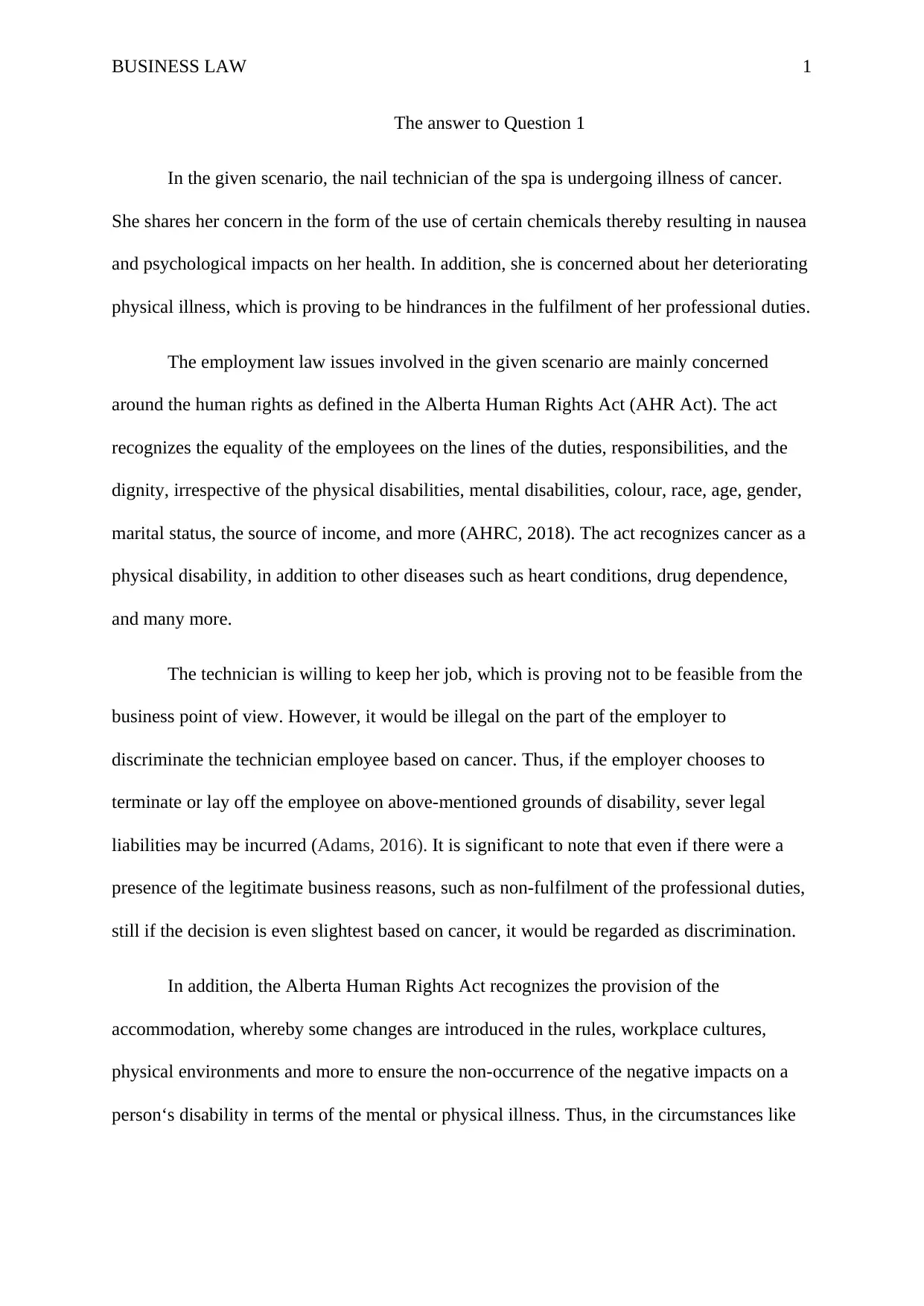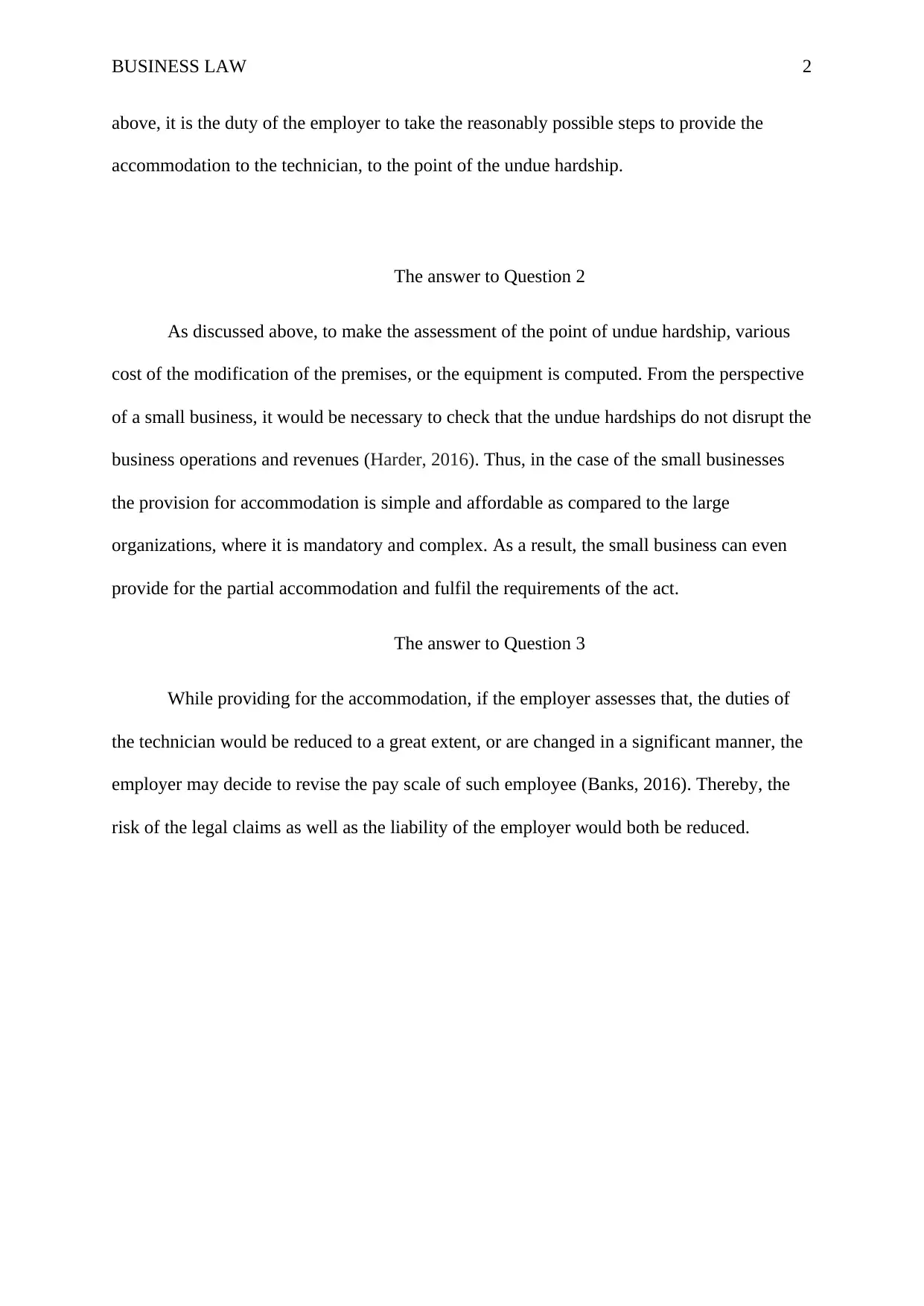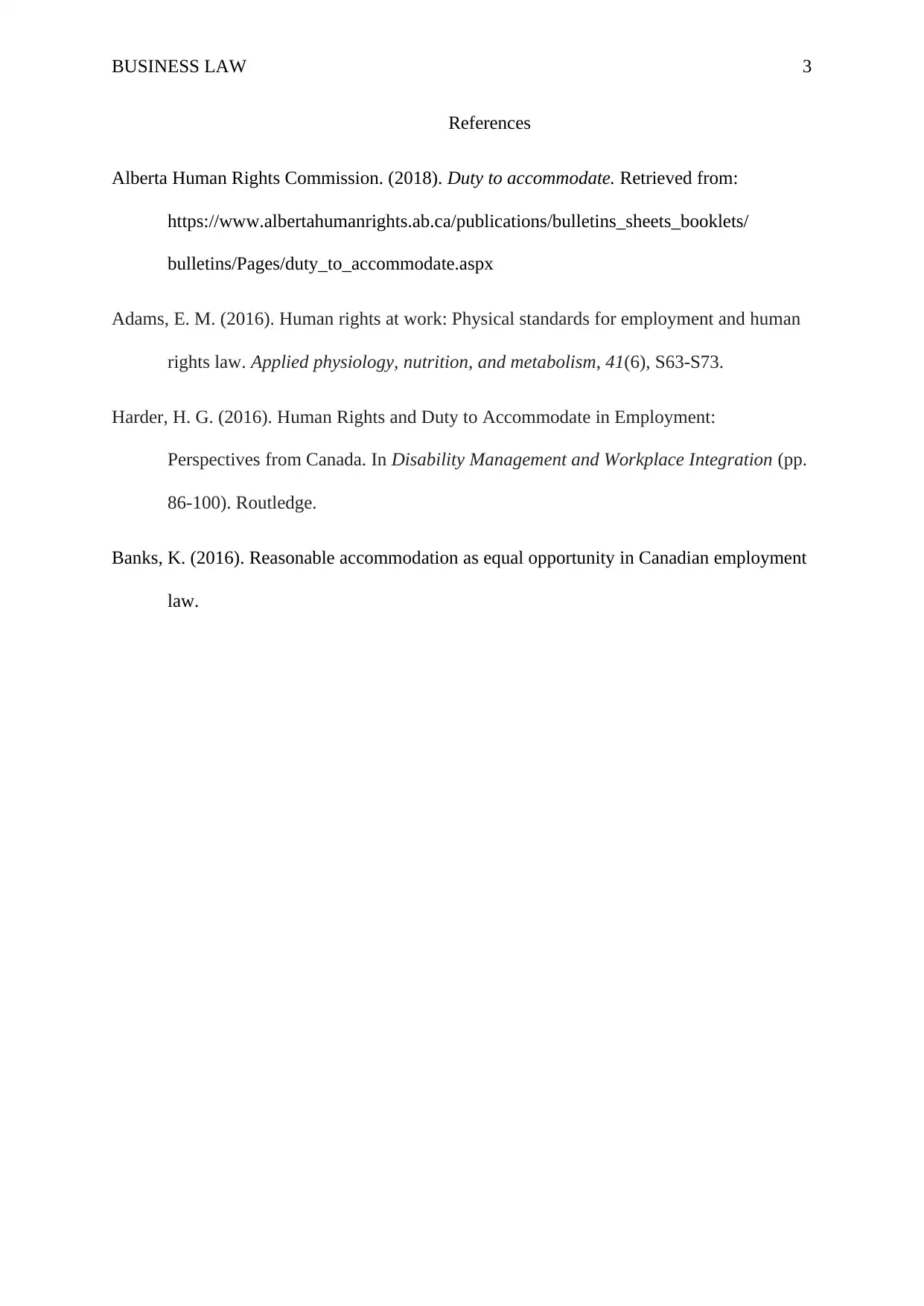Solution to MGMT1601 Employment Law Assignment - Bow Valley College
VerifiedAdded on 2023/05/29
|4
|713
|256
Homework Assignment
AI Summary
This document presents a solution to an employment law assignment, likely for the MGMT1601 course at Bow Valley College. It addresses issues related to the Alberta Human Rights Act, specifically concerning an employee with cancer and the employer's duty to accommodate. The solution discusses the legal implications of discrimination based on disability, the concept of undue hardship for small businesses, and the possibility of revising an employee's pay scale when duties are significantly altered due to accommodation. The document references the Alberta Human Rights Commission and relevant academic articles to support its analysis. Desklib provides access to this document, offering students a valuable resource for understanding employment law concepts and assignment assistance, including access to past papers and solved assignments.
1 out of 4











![[object Object]](/_next/static/media/star-bottom.7253800d.svg)